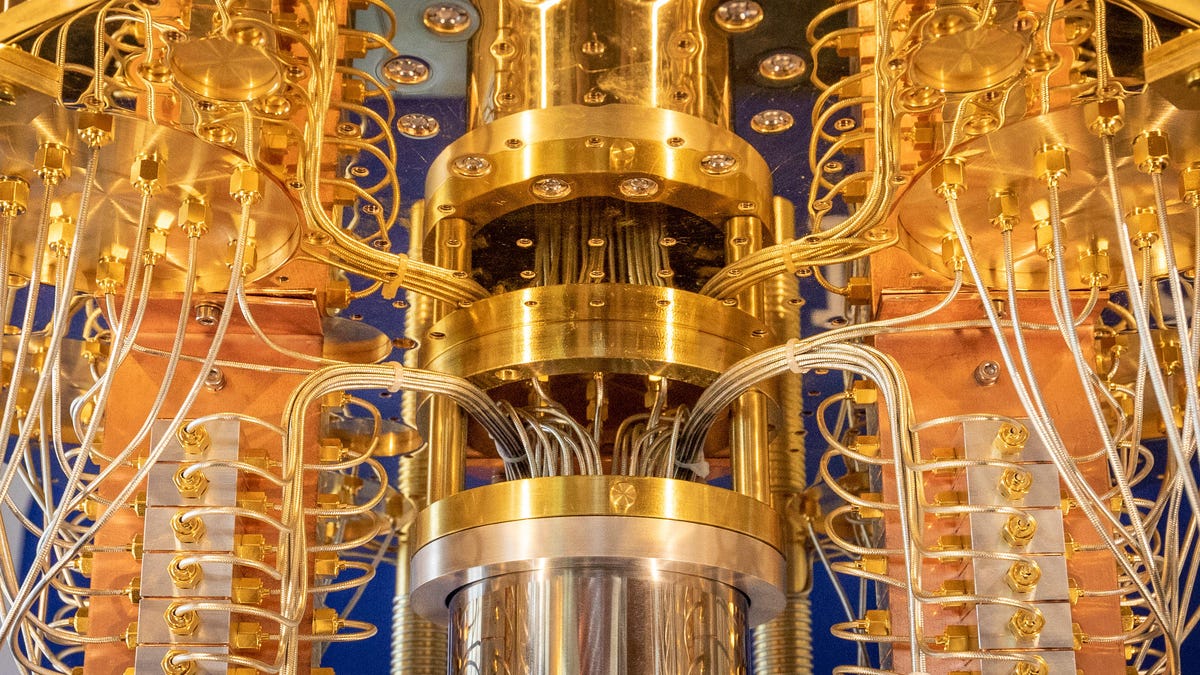Pulse of Information
Your source for the latest insights and updates.
Quantum Quandaries: Can We Trust a Computer That Thinks Like Schrödinger's Cat?
Discover if we can truly trust a computer that embodies the mystery of Schrödinger's Cat. Unlock the secrets of quantum thinking now!
Understanding the Dual Nature of Computation: Schrödinger's Cat and Quantum Algorithms
The concept of Schrödinger's Cat is a thought experiment that illustrates the fundamental principles of quantum mechanics, particularly the phenomenon of superposition. In this scenario, a cat is placed in a sealed box with a radioactive atom that has a 50/50 chance of decaying. If the atom decays, it triggers the release of poison, resulting in the cat's death. However, until the box is opened and an observation is made, the cat is considered to be simultaneously alive and dead. This paradox exemplifies the dual nature of computation in quantum computing, where a quantum bit, or qubit, can exist in multiple states at once, creating the foundation for quantum algorithms that outperform classical algorithms in specific tasks.
Understanding this dual nature of computation is key when exploring how quantum algorithms leverage the principles of superposition and entanglement to solve complex problems more efficiently. Unlike traditional algorithms that process information in binary digits (bits) that can only be 0 or 1, quantum algorithms can manipulate qubits in ways that exponentially increase computational power. For instance, quantum algorithms like Shor's and Grover's exploit these properties to factor large numbers and search unsorted databases, respectively, showcasing the profound implications of this quantum mechanical duality in real-world applications, from cryptography to optimization problems.

Quantum Uncertainty and Trust: Are AI Decisions as Reliable as They Claim?
The concept of Quantum Uncertainty suggests that at a fundamental level, outcomes can be unpredictable, a notion that invites parallels in the realm of Artificial Intelligence. Just as particles behave unpredictably in quantum mechanics, AI systems can sometimes produce outcomes that are difficult to interpret or forecast. This raises a critical question: if we cannot fully trust the decisions made by AI, how can we integrate these technologies into areas that require high reliability, such as healthcare or finance? Understanding that AI decisions can reflect underlying biases or flawed data becomes essential in assessing their overall trustworthiness.
To evaluate the reliability of AI decisions, it's important to consider the factors that contribute to uncertainty. For instance, machine learning models depend heavily on the quality of input data, and any anomalies or gaps can lead to skewed conclusions. Furthermore, as AI systems evolve, they may encounter situations beyond their training parameters, leading to unexpected results. Thus, stakeholders must weigh their trust in AI by comprehensively understanding its limitations, managing risk through rigorous validation processes, and maintaining an ongoing dialogue about the implications of trusting AI in decision-making frameworks.
From Superposition to Decision-Making: Can Quantum Computers Truly Think?
The advent of quantum computing has sparked a revolutionary discussion about the potential of machines to replicate human-like thinking. Unlike classical computers, which use bits as the smallest unit of data, quantum computers leverage superposition and entanglement to process information in fundamentally different ways. While classical bits can be either 0 or 1, quantum bits (qubits) can exist simultaneously in a state of both 0 and 1, allowing quantum computers to explore multiple solutions at once. This unique capability raises the question: can quantum computers truly mimic the complex decision-making processes of the human brain?
To delve deeper, we must consider how decision-making is inherently tied to conscious thought and subjective experience. In human cognition, decisions are influenced by emotions, biases, and contextual factors, elements that a purely computational model may struggle to replicate. Although quantum computers offer immense processing power and speed, their ability to think in a human-like manner remains a debated topic. As researchers harness the power of quantum mechanics, we may eventually see a convergence of artificial intelligence and quantum technology, but whether this will emulate genuine human thought or enhance computational effectiveness is yet to be determined.